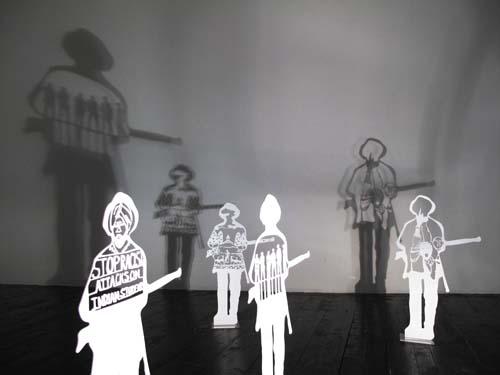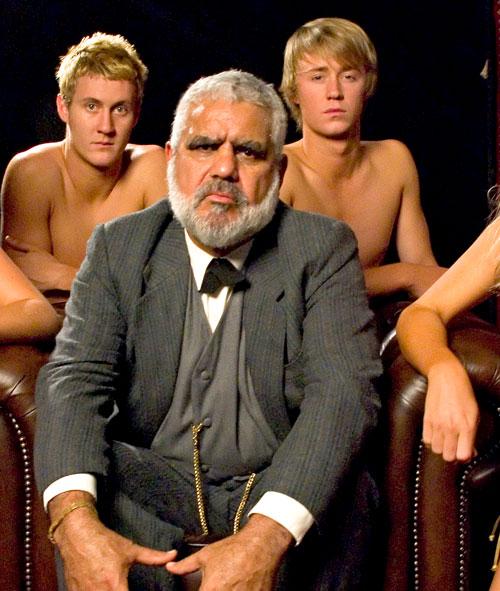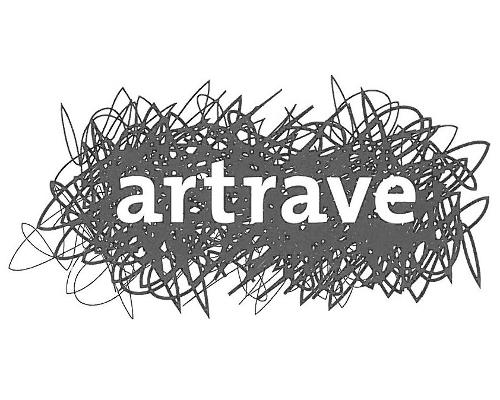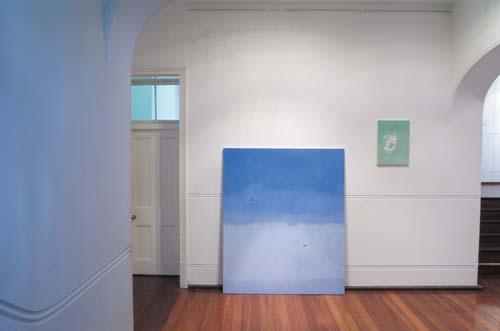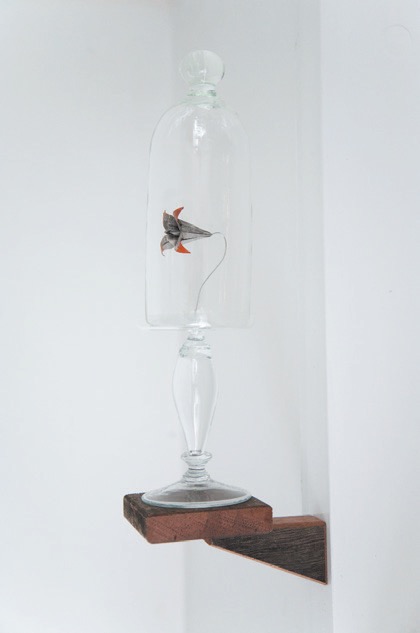
This is a curious, compelling exhibition: poised, delicately paced, with a subtle, warming intensity, both conceptually and materially. At its heart, for me, is a concern with the possibility and desirability of dialogue engendered across distance, across difference. From the show's introduction...an invitation emblazoned with its title in heavily flowered bold and cursive fonts…the unlikely and gently provocative pairing of 'critical’ and ‘generosity’ simultaneously draws upon, refutes and offers a generative breaching of the cool ‘critical distance’ privileged in aesthetic discourse since Kant. Entering the show (off a side street in the bustling hub of the Adelaide Central Market district), the two ‘spaces’ of the FELTspace gallery present an experiential shift between the airy ‘white cube’ neutrality that is the contemporary commonplace and a small room to the back of the gallery, painted dark plum and hung in salon style: cloistered and intimate, resonant of both the domestic lounge room and the museal display of period collections.
There are two essays: two critical voices offering by turns a rejection of the ‘knowing pose’, the complacent cynicism of much contemporary (artistic and social) practice, and an embrace instead, of instinct, beauty…the mystery and wonder of the unknown. Brigid Noone has curated from her love of art: assembling works which ‘honour the idea of challenging and moving the viewer’, which offer up their own, often joyful, sometimes messy processes...which ‘speak’ both of and for themselves.
The idea of ‘conversation’ lingers in my own response. So too, does an amorphous and pervasive recalled sense, experienced while viewing the show; of ‘shadowing’ as figure, pre-figure, and (sometimes tangible, physical) manifestation of the unseen intellectual and emotional effect that one ‘thing’ may have on another. Most artists have contributed more than one work, but these have been separated and mingle with the works of others: singularly affective within and affected by the nature of their installation. I am reminded of Louise Lawler’s photographs of artworks in museum and domestic settings, experienced spatially, phenomenally…incorporated into architectural spaces, and into lives…affected by the conditions of light, dust, and by their proximity to other things: their admixture within a range of interior settings; on tabletops, against shiny parquetry floors and in the bedrooms and storerooms of collectors.
Walking around this show, a similar, subtle sense of déjà vu and a growing sense of familiarity ensue as the sensibility, or material tendency of a work encountered is recognised or repeated elsewhere. The soft blues of Tomasz Talaj’s exquisite, tiny paintings (bodies, flowers, fabric sinking behind frosted framing glass) are echoed in the fresh striped cotton of the girl’s dress in Mary-Jean Richardson’s oil painting: their immersion also echoed in the girl’s self-absorption…the shadows on the wall she faces softly mirror the dense, dark ink of Annika Evans’ black-stained cloth-covered plinth. Evans’ flanking stretched canvas is marked by matching residue, the melted remains of multiple frozen, ink-stained ‘still life’ arrangements…the edges and tone of these dark blemishes replay, as memory trace, in the taut line of black underpants and marked, mottled flesh of Reed Young’s adjacent photograph. In this portrait, a young full-bodied woman also turns to the wall: face away from the viewer/photographer, distant yet intensely present in this captured/deferred encounter. Her head is tipped down and to the side, her vulnerable sun-scarred back displaying the residue of exposure, hotly etched in the painful index of her missing clothing. Her tiny fingers are delicately, tensely poised. Young’s two accompanying works are also portraits, each a strange, strained encounter tenderly rendered: a young boy holds his hand to the dead mouth of a taxidermied deer and a little girl sits calmly, staring unguardedly yet blankly, wide-eyed into the camera. The light in each of these three portraits is intense, unnatural, artificial - yet contrives to present the figures themselves as luminous, glowing: beautiful. A shadow is cast from the tree outside onto the gallery floor, mirroring the draped leather perforations of Talitha Kennedy, themselves constructed to resemble, reveal and conceal ‘nature’: floral fabric cushions padding out and giving voluptuous form to their hide-bound, organic coverings. The first work encountered on entering the show is Christopher Boha’s blown glass-covered goblet, which protects a meticulously folded tiny, tiny paper plane: the delicate ensemble shelf mounted full-frontal against a graffiti covered tin shelter. On moving toward the exit it is echoed by another goblet...this one containing a hand-painted origami flower...encountered as afterthought, or reminder...perched almost out of the field of vision, high above the shop-front window.
In 'Critical Generosity', the installation of artworks operates to both demonstrate and engender reciprocal influence: a doubling, re-doubling of affect, which gently percolates the consciousness. This affect multiplies and ricochets amongst and across the works...the visual, material language of each artist’s specific sensibility infectiously leaking repeating, replying…resonating across an assembled community.



